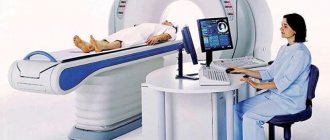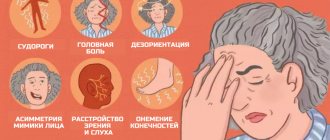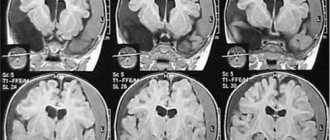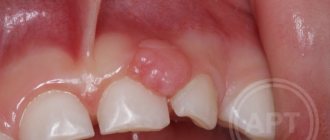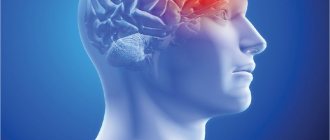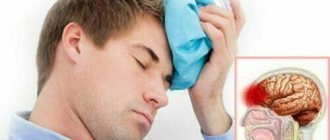No person is immune from injury. Anyone can, for example, trip and fall or hit their head. But almost any blow to the head in a certain way affects the state of the body; it can cause the development of dangerous pathologies. Thus, a blow to the temple can have unpredictable consequences, even death. Not everyone knows why this happens. Meanwhile, the temple is the most vulnerable area of the head; it is here that the brain is not sufficiently protected. That’s why our parents tell us from childhood that hitting us on the head is absolutely forbidden.
Why is this dangerous?
The temporal region is the most vulnerable part of the head. A blow to the temple can have serious consequences, ranging from concussion to death. Many nerve endings pass through this area and lead to other areas of the head, such as the eye sockets. In addition, the temporal bone is quite fragile, so it can break upon impact.
Also in the temporal region passes the temporal artery. A small blow is enough to cause a fracture of the bone plate, as well as a rupture of the artery, which is the most significant of all those that feed the dura mater of the brain.
Why is a blow to the temple dangerous? Trauma can lead to the following consequences:
- Paralysis of limbs.
- Aneurysm.
- Bleeding in the brain.
- Epilepsy.
- Concussion.
- Loss of vision.
- Death.
Thus, the anatomical structure of the human head, in particular the temporal region, suggests the development of health and life-threatening consequences when it is injured. Therefore, the answer to the question of why a person dies from a blow to the temple is obvious.
When immediate medical attention is required
Man is designed in such a way that the most vulnerable part of his head is the temporal region.
If a person hits himself or is hit in the temple, there is a risk of a concussion and loss of consciousness. But if it was hit by a professional, it would be completely fatal.
There is a list of main pathologies that can develop after a bruise in the temporal region. They are:
- Paralysis of the limbs.
- Epileptic seizures.
- The appearance of an aneurysm.
- Development of acute cerebral hemorrhage.
Symptoms and signs
The consequences of damage to the temporal region may not appear immediately. The first symptoms sometimes appear after two or three days. A person feels a headache, which can be easily relieved with painkillers. But sometimes it can get worse, the medications stop helping, and tinnitus appears. Over time, the pain is strongly felt in the temporal region, problems arise in the functionality of the neck, bruises appear under the eyes, vision and speech are impaired. A person may feel nauseous and dizzy, and lose consciousness. These symptoms may indicate a concussion or other health problems, so it is important to seek medical help immediately.
The following signs should alert you:
- Prolonged headaches that do not go away for three days.
- Inability to eliminate pain with medications.
- Noise in ears.
- Impaired coordination of movements.
- Visual impairment.
- Photophobia.
- The appearance of convulsions, hallucinations.
If immediately after a blow to the temple the consequences begin to appear, you need to urgently call an ambulance.
Headbutt and its consequences
Slips and falls can occur at any time and anywhere. If you are unlucky enough to hit your head, pay close attention to your well-being and use the advice of neurologist Pavel Repin.
— Pavel Nikolaevich, what symptoms immediately after a head hit are dangerous?
— Hitting your head can have different consequences. If immediately after the impact you experience nausea and vomiting, double vision, dizziness, unsteadiness when walking, or tinnitus that you had not noticed before, this may indicate serious brain damage - a hematoma or hemorrhage. An alarming signal is also a headache after a blow, which does not go away the next day, and increases significantly when tilting the head. With hemorrhage, the headache cannot be relieved by anything.
In these cases, visiting a doctor is mandatory (or better yet, calling an ambulance), because this condition requires serious treatment in a hospital - intensive care and constant monitoring. If you do not seek medical help immediately, even after a ruptured vessel, a person may feel better on the third or fourth day - this is called a clear interval. But then the swelling increases and the state of health deteriorates sharply. Hospitalization is required to prevent worsening swelling and re-bleeding.
Even if all these signs are mild, you need to see a doctor in the next two days after the injury, because if you miss time, recovery from the injury will be significantly prolonged. In addition, a person may not realize that he has a hemorrhage. This is diagnosed during a neurological examination.
If a person loses consciousness after hitting their head, this may not only be a consequence of a brain injury, but also a manifestation of an attack of syncope associated with improper functioning of brain cells. But even in this case, you need to consult a doctor, confirm the diagnosis and prescribe treatment.
— How long does it take to treat a brain injury?
— The first stage of treatment is pain and vascular therapy, which promotes the restoration of damaged brain cells. If necessary, medications are prescribed to normalize sleep and improve concentration of memory and attention. Then comes the recovery stage, which lasts one to two months. At this time, you should not visit the sauna, since temperature changes are dangerous due to the appearance of vasospasm, swim, dive under water, and run, since during running there is a strong impact on the blood vessels of the brain.
First aid
Adult concussion symptoms and treatment are closely related. The doctor will tell you about this in detail. But before the ambulance arrives, it is necessary to provide first aid to the victim. First of all, cold is applied to the affected area if the injury is closed. If there is bleeding, apply a gauze pad to the wound and carefully bandage the head. Do not touch or remove bone fragments that protrude from the wound.
Treatment for loss of consciousness should begin with the person being placed on their side to prevent them from choking on vomit if they vomit. The head and shoulders must be positioned so that they are slightly higher than the body. It is recommended to fix them. It is necessary to check the person’s pulse and breathing; if they are absent, resuscitation measures must be carried out: artificial respiration, cardiac massage.
If the victim is conscious, he should not move until paramedics arrive. The person needs to be calmed down. The victim is transported to the clinic in a supine position.
How to provide first aid to an injured person
In the event that a person has received a strong blow to the temple and then has a headache, he should immediately call an ambulance.
While the doctors are traveling, you need to try to help the victim yourself:
- Turn the person onto their side, slightly lifting their head and shoulders. Such actions will help prevent the victim from choking on his own vomit.
- The most important thing is to ensure that the person does not move, because the head must remain in its original position.
- After a blow to the temple, ice should be applied to the bruised area so as not to put pressure on the area of the hematoma. The same should be done with any bumps that appear.
In the case when a woman hits her head and develops a bleeding wound, you need to use hydrogen peroxide and treat the site of the impact.
Diagnostic measures
Even with a light blow to the temple, the consequences can be unpredictable. Therefore, it is recommended to undergo examination by such specialists as a therapist, neurologist, or surgeon. Self-medication is strictly prohibited.
The doctor must eliminate the risk of developing dangerous injuries. For this purpose the following is carried out:
- X-ray of the head bones.
- CT or MRI of the brain (the price may vary slightly in different clinics) to exclude internal bleeding and hematoma, identify changes in the brain, and diagnose complications.
The doctor also conducts a study of vision and hearing, tactile sensations, coordination of movements, balance, and reflexes.
In some cases, the doctor may send the victim home under the supervision of relatives. Relatives should monitor the patient throughout the day, and they should periodically awaken the victim in order to determine whether he wakes up normally. Adult concussion symptoms and treatment are interrelated. If unpleasant symptoms occur or worsen, hospitalization is required.
While under home observation, the patient must remain in bed, avoid overexertion and physical activity, and do not strain the eyesight.
Therapy
An MRI of the brain (the average price is two thousand rubles) will give an accurate picture of the disease. Depending on this, the doctor will develop a treatment regimen that will focus on:
- To improve metabolic processes in the brain.
- Strengthening vascular walls.
- Prevention of cerebral edema.
- Restoration of blood circulation.
- Relief of pain syndrome.
At the clinic, doctors will eliminate not the symptoms of the pathology, but its causes. Therefore, in case of injuries to the temporal region, it is recommended to remain in a medical facility for treatment. In severe cases, surgery may be required. In some cases, intracranial hematoma is drained.
In the absence of bleeding, conservative treatment is resorted to. The doctor may prescribe sedatives, painkillers, diuretics, muscle relaxants, and analgesics. Antibacterial and antiepileptic drugs are sometimes prescribed.
Complications and consequences
A blow to the temple can have the following consequences:
- Mental and autonomic disorders.
- Impaired sensitivity, rhea, vision and hearing.
- Limitation of mobility.
- Impaired memory and consciousness.
- Parkinson's syndrome, epilepsy.
- Brain atrophy.
- Vascular damage.
- Attachment of a secondary infection.
When can you get hit in the head?
There are a number of situations in which a person may experience head injuries. It is worth considering them in more detail:
- Hitting your head after a fall.
- A hard object or stone was thrown at a person's head.
- A blow to the temple with a bat or brass knuckles, which causes a severe headache.
- Injury as a result of a traffic accident.
- Hit to the head during a street fight.
- Throwing a punch during sports training.
- Intentionally beating a person.
After injury, a large hematoma may appear on the head. In more complicated situations - extensive bleeding. Bleeding is especially common when the frontal part is affected.
Many falls result in a concussion, which can cause a person to lose consciousness and develop memory problems.
In addition, it is after a blow to the head that people may develop mental illnesses.
Forecast
The prognosis will depend on the severity and nature of the injury. In a mild case, the bruise does not lead to serious health problems, so the prognosis will be good. In severe cases, death can occur.
Complications after an injury are also possible. In this case, the victim is often forced to take anticonvulsants throughout his life. Sometimes the consequence of a bruise can be an irreversible mental disorder.
Prevention
A blow to the temple can have life-threatening consequences. In this area, the brain is most vulnerable, since the temporal bone is quite thin (two millimeters). Doctors recommend taking precautions. Do not get into fights, avoid extreme hobbies. Children need to be monitored especially closely, as they are the ones most susceptible to head injuries.
If a bruise does occur, you must immediately call an ambulance. The consequences of a bruise may not appear immediately, but after several days, so it is important to undergo prompt diagnosis and begin therapy to reduce the risk of developing dangerous consequences.
What symptoms occur after a blow to the temple?
If the blow to the temple is not strong, there is no danger to health. But if you experience unpleasant symptoms after an injury, you should consult a doctor.
Warning signs after a blow to the temple:
- nausea;
- attacks of vomiting and dizziness;
- loss of consciousness;
- violation of movement coordination;
- change in the shape of the pupils;
- double vision, tinnitus;
- convulsions, hallucinations;
- bone may come out of the wound;
- it hurts to move your neck, chew, swallow, open your mouth;
- a person cannot walk straight because he is very dizzy;
- bruises appear under the eyes;
- problems with vision and speech arise.
The first symptoms after a blow to the temporal region may appear after 2-3 days. The most common concern is headache, which can be relieved with analgesics. But gradually the discomfort intensifies, and the medications stop helping.

